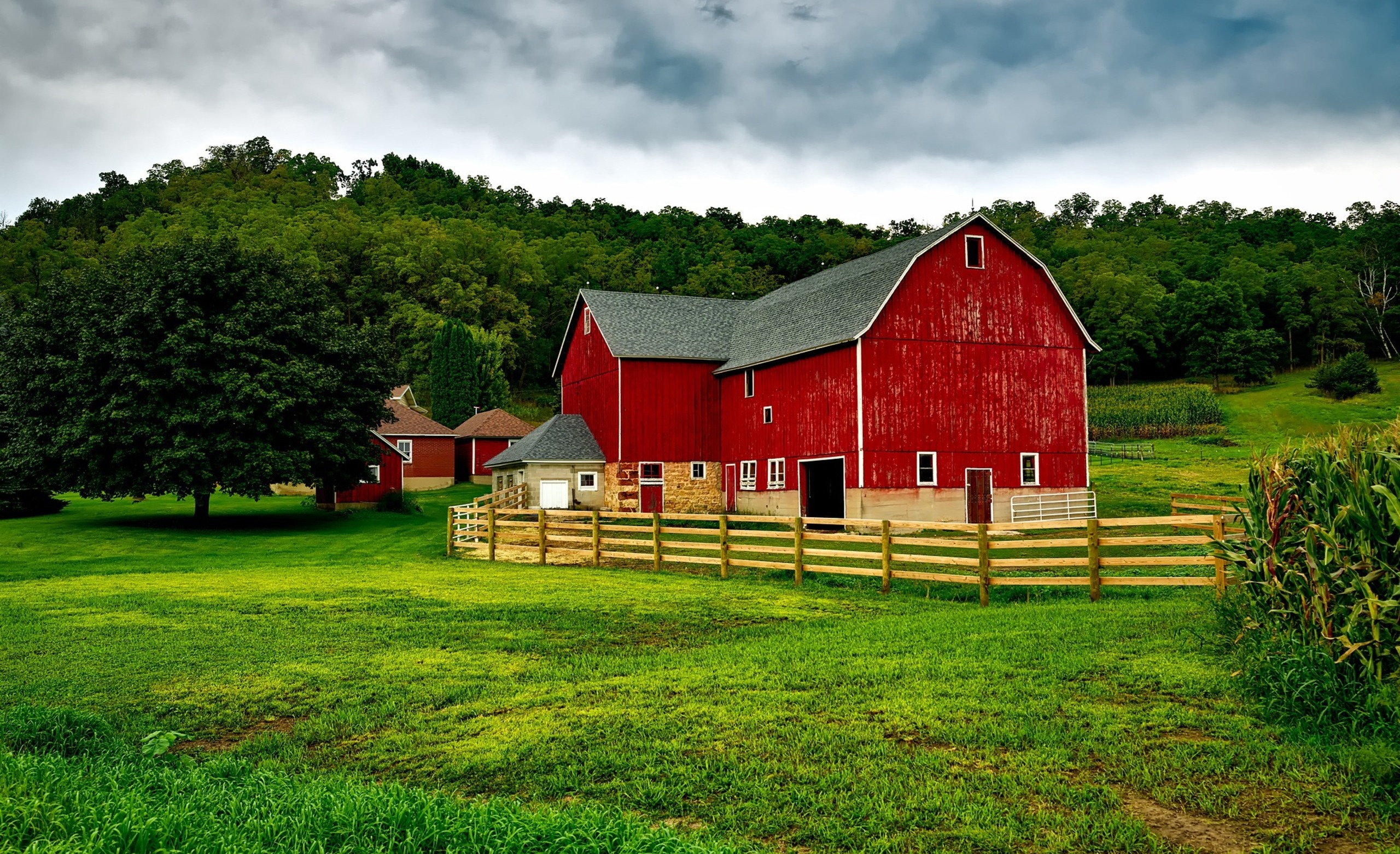
How To Build Your Own Barn
Learning how to build your own barn is an exciting journey that combines creativity, craftsmanship, and practicality. Imagine having a space tailored to your specific needs—whether it’s for storing equipment, housing livestock, or serving as a workshop.
The benefits are numerous: increased property value, personalized design choices, and the satisfaction of creating something with your own hands. With so many options available in terms of size and style, you can create a barn that fits seamlessly into your landscape while reflecting your personal taste.
Plus, taking on such a project allows you to learn new skills and connect with the land like never before. Ready to roll up those sleeves? Let’s explore how to build your own barn from start to finish!
Types of Barns and Their Uses
Barns come in various styles, each designed for specific purposes. Traditional barn types include the gable and hip roof designs. Gable barns are ideal for livestock storage, while hip roofs provide excellent stability against harsh winds.
Then there’s the gambrel barn, famous for its distinctive roof shape. This style maximizes overhead space, making it perfect for hay storage or equipment. For those interested in a more modern approach, monitor barns feature an elevated center section that allows natural light to flood the interior.
They work well as workshops or recreational spaces. Don’t overlook the utility barn either; it’s often simpler in design but highly functional for basic equipment and tool storage. Each type of barn brings unique features tailored to meet different needs on your property.
Materials Needed for Building a Barn
When building your own barn, selecting the right materials is crucial. Start with sturdy wood for framing and siding. Pressure-treated lumber offers durability against pests and weather elements. You’ll also need a solid foundation material. Concrete blocks or poured concrete work well to support the structure’s weight.
For roofing, consider metal sheets or asphalt shingles. Metal is long-lasting and can withstand harsh conditions. Don’t forget insulation if you plan on housing animals or storing sensitive items inside. Insulation helps regulate temperature and maintain comfort year-round.
Doors and windows require robust frames, so opt for quality hardware that resists wear over time. Hinges should be heavy-duty to ensure longevity as well. Gathering tools like saws, hammers, drills, and safety gear is essential too. Always prioritize safety while working on this ambitious project!
Step-by-Step Guide to Building Your Own Barn
Building your own barn can be a rewarding project. It requires careful planning and execution, but the sense of accomplishment is worth it.
Step 1: Choosing the Right Location for Your Barn
Choosing the right location for your barn is crucial. It sets the stage for functionality and accessibility.
Start by considering proximity to your home or farm activities. You want it close enough for convenience, yet far enough to minimize noise and disturbance.
Next, think about drainage. A well-drained site prevents water accumulation, keeping both animals and supplies dry. Look for natural slopes that promote effective water runoff.
Sunlight also plays a vital role. Positioning your barn to receive ample sunlight can help with ventilation and keep the interior warm during colder months.
Don’t ignore local zoning regulations either. Check with municipal guidelines as they may dictate where you can build or specific requirements you need to follow.
Consider future expansion possibilities. Your needs might change over time; having extra space nearby can be a significant advantage down the road.
Step 2: Designing Your Barn – Factors to Consider
Designing your barn is an exciting step that sets the foundation for what it will become. Start by considering its primary use. Will it house animals, store equipment, or serve as a workshop? Each purpose demands different layouts and features.
Next, think about size. Ensure you have enough space not just for current needs but also potential future expansion. A well-planned design allows flexibility.
Ventilation is crucial too. Good airflow keeps livestock healthy and prevents moisture buildup in stored items. Adding windows or vents can enhance air circulation significantly.
Don’t forget aesthetics! The style should complement your property. Whether traditional or modern, find a look that resonates with you while being functional.
Local building codes may impose restrictions on height, width, and materials used. Research these regulations early to avoid costly adjustments later on; they could impact your entire design plan dramatically.
Step 3: Preparing the Foundation
Preparing the foundation is crucial for your barn’s stability and longevity. Start by choosing a level area, free from tree roots and debris. Ensure proper drainage to prevent water accumulation.
Next, mark out the dimensions of your barn using stakes and string. This will help you visualize the space and ensure accuracy during construction.
Dig down to reach solid soil or bedrock if possible. Depending on your design, you may need to pour concrete footings or create a gravel base for added support.
If you’re opting for posts in the ground, make sure they are set deep enough to withstand wind pressure and shifting soil. Use a level tool to confirm that everything is even before moving on.
A well-prepared foundation sets the stage for everything else—don’t rush through this process! Taking time now ensures you’ll have fewer issues as you build up from here.
Step 4: Building the Frame and Walls
Building the frame and walls of your barn is a critical step in ensuring its strength and stability. Start by laying out your framework according to the design you’ve chosen. This usually involves setting up a series of vertical posts, which will support not just the walls but also the roof.
Use sturdy lumber for framing; pressure-treated wood is ideal for ground contact areas. Secure each post firmly into place, making sure everything is level.
Once the frame is solid, it’s time to add wall panels or siding. You can choose from various materials like plywood, metal sheets, or even reclaimed wood for that rustic look.
Ensure that every wall panel fits snugly within the frame and use proper fasteners to keep everything secure. Pay attention to insulation if you’re planning on using your barn year-round—this can significantly improve comfort levels inside.
Step 5: Adding Roofing, Doors, and Windows
With the frame of your barn in place, it’s time to focus on roofing, doors, and windows. These elements not only enhance aesthetics but also provide functionality and protection.
Start by selecting a roofing material that suits your climate. Metal roofs are durable and reflect heat, while shingles offer a classic look. Ensure proper installation for longevity.
Next comes the door selection. Think about size and style—double doors work well for large equipment access, while smaller side doors can serve daily needs. Don’t forget to include secure locking mechanisms.
Windows bring natural light into your barn, creating a welcoming atmosphere for livestock or storage spaces. Choose sizes that balance ventilation with security. Consider adding screens to keep insects out without sacrificing airflow.
Each detail contributes significantly to the overall integrity of your barn structure. Enjoy this creative phase where function meets design!
Step 6: Finishing Touches
Once the main structure of your barn is complete, it’s time to focus on those finishing touches. These details can really elevate the overall look and functionality of your space.
Consider painting or staining the exterior to protect against weather elements while adding a personal flair. Choose colors that complement your property and integrate well with the landscape.
Don’t forget about lighting! Installing outdoor lights enhances both security and ambiance. Inside, consider task lighting for work areas where you’ll be spending time.
Maintaining and Upgrading Your Barn
Maintaining your barn is crucial for its longevity. Regular inspections help catch issues early, such as leaks or pest infestations. Check the roof and siding often to prevent water damage. Clean out stalls and storage areas regularly. This not only keeps the space tidy but also reduces odors and promotes a healthier environment for animals.
Consider upgrading your barn with energy-efficient lighting or ventilation systems. These improvements can save money in the long run while enhancing comfort. Adding insulation may be another valuable upgrade, especially if you house livestock. It helps regulate temperature during hot summers and cold winters.
Don’t forget about aesthetics; a fresh coat of paint can work wonders both inside and out. Personal touches make it feel more like home while protecting wood from decay. Taking these steps will ensure that your barn remains functional, inviting, and ready for whatever purpose you have in mind.
Final Thoughts: Building Your Own Barn
Building your own barn can be a rewarding endeavor. It not only provides you with a functional space but also allows for creativity and personalization. Whether you’re looking to house animals, store equipment, or create a workshop, the possibilities are endless.
As you embark on this journey, keep in mind the considerations we’ve discussed—like location and materials. Each step in the process has its unique challenges, but with careful planning and determination, these can be overcome.
The satisfaction of seeing your completed barn will make all the effort worthwhile. Remember to maintain your structure over time so it continues to serve your needs effectively. Upgrades can help adapt the barn as circumstances change. Your dream barn is within reach; take that first step today!




Self-sufficiency knowledge and skills are great to have. To be able to build your own barn with your own design and functionality is very rewarding. Your suggestions to remember are very helpful to make sure once you’ve spent the money on materials and put in all the work that your barn is built to last. Do you usually build the walls on the ground and then raise them and if so, how many people do you need to make that work?
Hey Mike,
Thank you for stopping by and sharing your thoughts on how to build your own barn. To be honest, I’ve never attempted to build my own barn. However, I’ve done much smaller projects such as building a backyard shed. My brother and I built the walls on the ground and raised them into place when they were ready.
It’s always best to have help. Especially on a huge project like building your own barn. And if you do recruit some help. Make sure they have some carpentry skills as well. It will go a long way into helping you build your own barn successfully. Or you can just hire a contractor to do it for you.
Best wishes Mike,